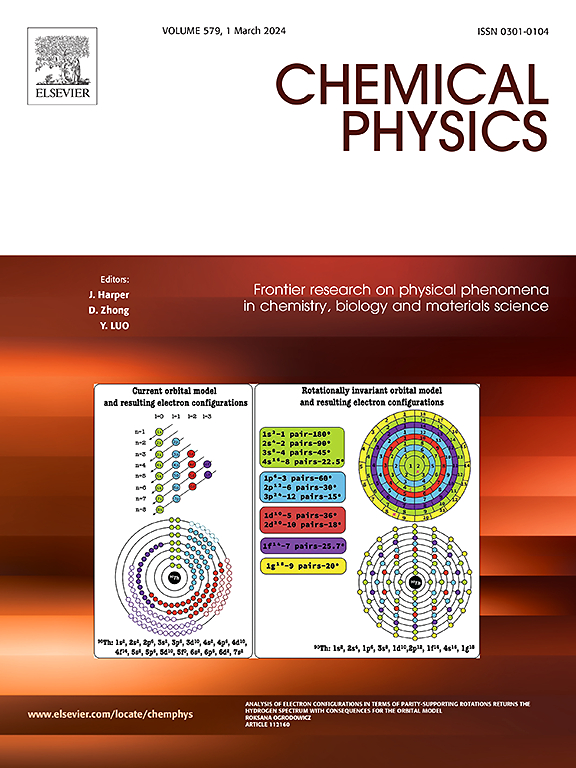How crucial is the role of magnetic centres in tuning magneto-resistive features of one-dimensional transition metal-based magnetic nanostructures?
IF 2
3区 化学
Q4 CHEMISTRY, PHYSICAL
引用次数: 0
Abstract
Magnetic tunnel junctions are created by alternating relative spin orientation of ferromagnetic electrodes or spin orientation of magnetic centres in the channel/ insulating tunnel barrier separating two ferromagnetic electrodes. The performance of the resulting device is estimated through tunnelling magnetoresistance (TMR), known as a spin valve. Herein, we present an extensive report on the influence of dual action of spin orientation of atomic magnetic centres and ferromagnetic electrodes, as well as the length of the insulating spacer [Mn-Cn-Mn; n = 2 to 8] at eight different relative spin orientations and conclude about the best probable relative orientations and optimum spacer length (n = 7) to achieve very high TMR. A comprehensive mathematical formulation about choosing the perfect combination of relative spin orientation to attain the highest degree of TMR has been proposed. Observed results have been explained through transmission coefficients with a molecular level insight through the study of transmission pathways and molecular projected self-consistent Hamiltonian (MPSH) states. The present study is expected to provide enough evidence to the experimentalists to realise such a device in practice in the near future.

磁性中心在调整一维过渡金属基磁性纳米结构的磁阻特性方面的作用有多重要?
磁隧道结是由铁磁电极的相对自旋方向或分离两个铁磁电极的通道/绝缘隧道势垒中磁中心的自旋方向交替产生的。所得到的器件的性能是通过隧道磁电阻(TMR),即自旋阀来估计的。在此,我们广泛地报道了原子磁中心和铁磁电极的自旋取向的双重作用以及绝缘间隔层[Mn-Cn-Mn;n = 2 ~ 8],并总结出实现极高TMR的最佳可能相对取向和最佳间隔长度(n = 7)。提出了一种选择相对自旋取向的完美组合以获得最高TMR度的综合数学公式。通过对传输途径和分子投影自洽哈密顿(MPSH)态的研究,透射系数在分子水平上解释了观测结果。本研究有望为实验人员在不久的将来实现这种装置提供足够的证据。
本文章由计算机程序翻译,如有差异,请以英文原文为准。
求助全文
约1分钟内获得全文
求助全文
来源期刊

Chemical Physics
化学-物理:原子、分子和化学物理
CiteScore
4.60
自引率
4.30%
发文量
278
审稿时长
39 days
期刊介绍:
Chemical Physics publishes experimental and theoretical papers on all aspects of chemical physics. In this journal, experiments are related to theory, and in turn theoretical papers are related to present or future experiments. Subjects covered include: spectroscopy and molecular structure, interacting systems, relaxation phenomena, biological systems, materials, fundamental problems in molecular reactivity, molecular quantum theory and statistical mechanics. Computational chemistry studies of routine character are not appropriate for this journal.
 求助内容:
求助内容: 应助结果提醒方式:
应助结果提醒方式:


